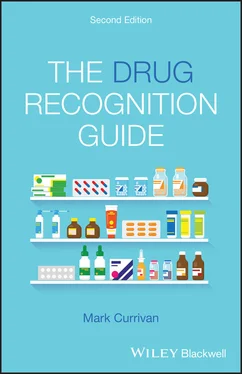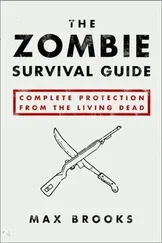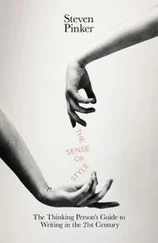1 Cover
2 Title Page The Drug Recognition Guide Second Edition Mark Currivan Wirral University Teaching Hospital NHS Trust Wirral, United Kingdom
3 Copyright Page
4 Dedication
5 Foreword
6 Introduction Drug names: generic/proprietary Comparison of rINNs in English, French, Spanish, Portuguese and Italian Drug names and design motifs Information about the guide References
7 1 Drugs that affect the gastrointestinal system Aminosalicylates Antispasmodics Antimuscarinic antispasmodics Direct‐acting smooth muscle relaxants H2‐receptor antagonists Laxatives Proton pump inhibitors (PPIs) References
8 2 Drugs that affect the cardiovascular system ACE inhibitors Alpha‐1 adrenoceptor blockers Angiotensin receptor blockers Beta‐blockers Calcium channel blockers Class I calcium channel blockers Class II calcium channel blockers Class III calcium channel blockers Centrally‐acting antihypertensives Diuretics Loop diuretics Thiazide diuretics Potassium‐sparing diuretics and aldosterone antagonists Osmotic diuretics Endothelin receptor antagonists Potassium channel activators Renin inhibitors Antiarrhythmics Class I antiarrhythmics Class II antiarrhythmics Class III antiarrhythmics Class IV antiarrhythmics Class V antiarrhythmics Cardiac glycosides Nitrates References
9 3 Drugs that affect blood coagulation and lipids Anticoagulants Direct factor Xa inhibitors Direct thrombin inhibitors Heparins Heparinoids Hirudin analogues Prostaglandin analogues Synthetic pentasaccharides Vitamin K antagonists Antiplatelets Cyclo‐oxygenase (COX) inhibitors Glycoprotein IIb and IIIa inhibitors P2Y12 platelet receptor antagonists Phosphodiesterase inhibitors Fibrinolytics Lipid‐regulating agents Bile acid sequestrants Cholesterol absorption inhibitors Fibrates Miscellaneous lipid‐regulating agents MTP inhibitors PCSK9 inhibitors Statins (HMG CoA reductase inhibitors) References
10 4 Drugs that affect the respiratory system Respiratory disease drugs Antimuscarinics Beta‐2 agonists Corticosteroids Leukotriene receptor antagonists Monoclonal antibodies Phosphodiesterase type‐4 inhibitors Xanthines References
11 5 Drugs that affect the central and peripheral nervous system Antiepileptic drugs Antidepressants Monoamine oxidase inhibitors (MAOIs) Serotonin and/or noradrenaline reuptake inhibitors (SSRI, NRI, SNRI and SMS) Tricyclic antidepressants (TCAs) Miscellaneous antidepressants Antipsychotics First‐generation antipsychotics Second‐generation antipsychotics Second‐generation antipsychotics Benzodiazepines Non‐benzodiazepine sedatives Cyclopyrrolones and imidazopyridines Melatonin receptor agonists Antihistamines Antimuscarinics Parkinson's disease drugs Levodopa and DDI compounds COMT inhibitors Dopamine receptor agonists Monoamine oxidase‐B inhibitors Antimuscarinic antiparkinsonian drugs Glutamate antagonists References
12 6 Drugs used in the management of pain Analgesics Non‐opioid analgesics Compound analgesics Opioid analgesics 5HT‐1 agonists Non‐steroidal anti‐inflammatory drugs (NSAIDs) Enolic acid class NSAIDs Acetic acid, propionic acid and fenamic acid class NSAIDs Cyclo‐oxygenase (COX)‐2 inhibitors References
13 7 Antiemetics: drugs used in the management of nausea and vomiting Antiemetics Analogues of histamine Antihistamine antiemetics Antimuscarinic antiemetics Dopamine receptor antagonists 5HT‐3 receptor antagonists Neurokinin‐1 receptor antagonists Phenothiazines References
14 8 Diabetes drug therapy and other medicines that affect the endocrine system Insulins Short‐acting insulins Intermediate and long‐acting insulins Biphasic insulins Antidiabetic drugs Alpha‐glucosidase inhibitors Biguanides Dipeptidylpeptidase‐4 inhibitors Glucagon‐like peptide‐1 agonists Meglitinides Sodium‐glucose (linked) co‐transporter 2 inhibitors Sulfonylureas Thiazolidinediones Bisphosphonates Corticosteroids Phosphodiesterase inhibitors Prostaglandin analogues References
15 9 Antimicrobials: drugs used to treat infectious diseases Antibacterials Aminoglycosides Carbapenems Cephalosporins Compound antibiotics Folic acid inhibitors Lincosamides Lipopeptides and glycopeptides Macrocyclic antibiotics Macrolides Nitrofuran derivatives Nitroimidazoles Oxazolidinones Penicillins Quinolones Rifamycins Sulfonamides Tetracyclines and glycylcyclines Antifungals Antivirals Antiretrovirals References
16 10 Chemotherapy and immunomodulatingagents Chemotherapy Alkylating agents Antimetabolites Cytotoxic antibiotics Platinum compounds Proteasome inhibitors Protein (and tyrosine) kinase inhibitors Taxanes Topoisomerase‐inhibiting agents Vinca alkaloids Sex hormones and hormone antagonists Immunomodulating agents Analogues of thalidomide Antiproliferative immunosuppressants Calcineurin and ‘non‐calcineurin’ inhibiting immunosuppressants Monoclonal antibodies References
17 Index
18 Index
19 End User License Agreement
1 Cover Page
2 Table of Contents
3 Begin Reading
1 iii
2 iv
3 v
4 ix
5 xi
6 xii
7 xiii
8 xiv
9 1
10 2
11 3
12 4
13 5
14 7
15 8
16 9
17 10
18 11
19 12
20 13
21 14
22 15
23 16
24 17
25 18
26 19
27 20
28 21
29 22
30 23
31 24
32 25
33 26
34 27
35 28
36 29
37 31
38 32
39 33
40 34
41 35
42 36
43 37
44 38
45 39
46 40
47 41
48 42
49 43
50 44
51 45
52 46
53 47
54 48
55 49
56 50
57 51
58 52
59 53
60 54
61 55
62 56
63 57
64 59
65 60
66 61
67 62
68 63
69 65
70 66
71 67
72 68
73 69
74 70
75 71
76 72
77 73
78 74
79 75
80 77
81 78
82 79
83 80
84 81
85 82
86 83
87 84
88 85
89 86
90 87
91 89
92 90
93 91
94 92
95 93
96 94
97 95
98 96
99 97
100 99
101 100
102 101
103 102
104 103
105 105
106 106
107 107
108 108
109 109
110 110
111 111
112 112
113 113
114 114
115 115
The Drug Recognition Guide
Second Edition
Mark Currivan
Wirral University Teaching Hospital NHS Trust
Wirral, United Kingdom

Читать дальше













